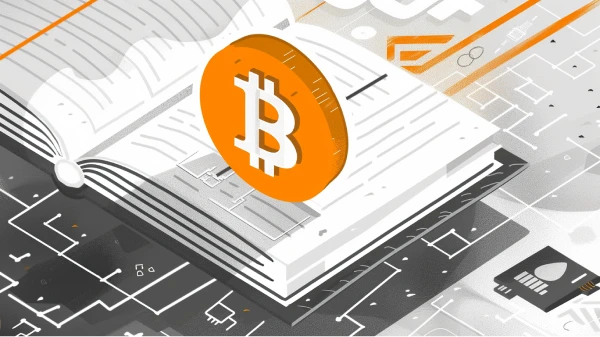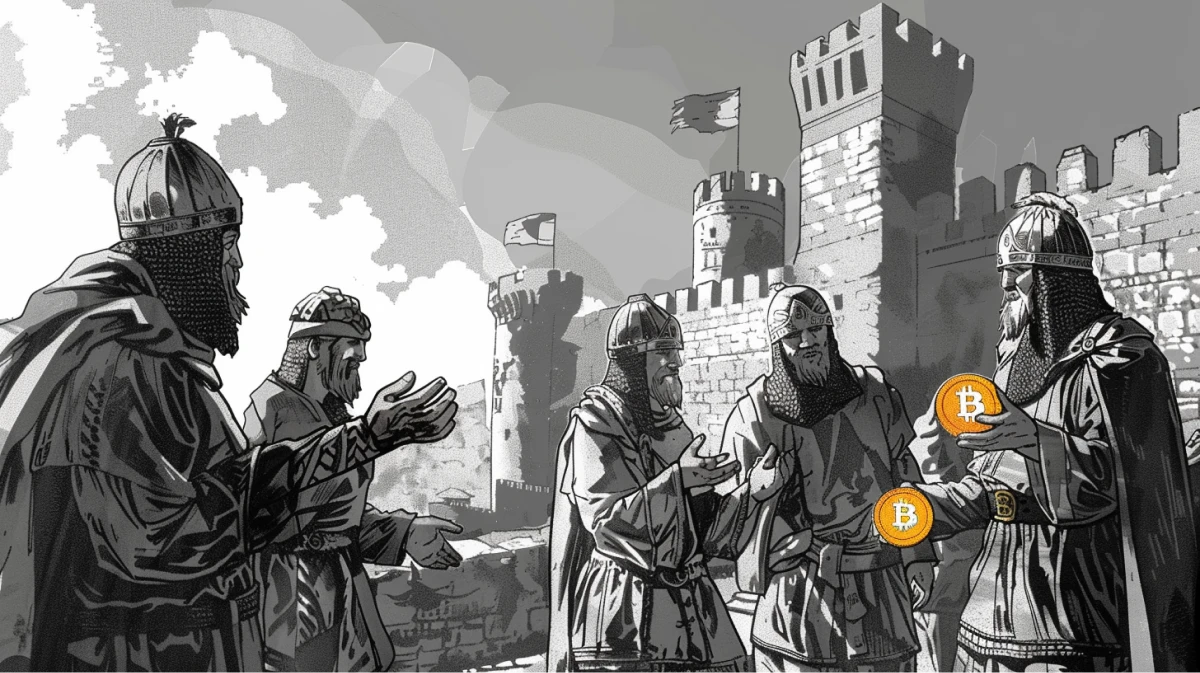A blockchain is a decentralized digital ledger that records transactions in a series of linked blocks. A blockchain is the foundational data structure behind Bitcoin, ensuring that transactions are securely recorded and permanently stored.
Each block in the blockchain contains data, such as transactions in the case of Bitcoin. These blocks are connected using cryptographic techniques, forming an immutable chain that prevents tampering or unauthorized changes.
Think of the blockchain as a public ledger that keeps track of all accounts on the network. If the entire blockchain is a book, then each block is a new page, updating account balances and confirming transactions. This structure ensures that every transaction ever made remains transparent and verifiable.
How Does a Blockchain Work?
A blockchain works by grouping transactions into blocks and securing them using cryptographic hashes, which link each new block to the previous one. This process ensures that once a block is added, it cannot be altered without changing every subsequent block, making the system highly secure.
To maintain the ledger, Bitcoin miners compete to solve complex cryptographic puzzles. The first miner to find a valid hash earns the right to mine the next block, meaning they:
- Select pending transactions from the Bitcoin network’s queue called the mempool.
- Organize the transactions into a block.
- Broadcast the block to the network, making it permanent and irreversible.
Miners are rewarded with newly minted bitcoin and transaction fees, incentivizing them to keep the network running.
➤ Learn more about Bitcoin mining.
How Blockchain Differs from Traditional Banking
To understand how the blockchain powers Bitcoin, first consider how people normally transfer money. When you send money through a bank, the bank updates its internal ledger by deducting funds from your account and adding them to the recipient’s. If you send money to another bank, multiple parties must reconcile their records, often causing delays.
Bitcoin eliminates the need for this complicated and long system. Instead, transactions are broadcast to miners, verified, and permanently recorded on the blockchain. This makes Bitcoin public, auditable, and irreversible.
Features of the Bitcoin Blockchain
Transparency
The Bitcoin blockchain is a completely public ledger. Anyone with an internet connection can access any number of “block explorers” to audit the supply and see which addresses own which bitcoin. Power users can run their own Bitcoin node and directly examine any block if they prefer to not trust any website.
➤ Learn more about Bitcoin addresses.
This transparency is essential. Without it, it would effectively be impossible to verify the circulating supply of bitcoin or audit the validity of the transactions on the network.
Decentralization
Bitcoin’s blockchain is distributed. It is stored and maintained on tens of thousands of computers around the world, rather than in one centralized location.
Since the ledger is public and freely accessible to anyone, how do we ensure this isn’t censored or falsified? For example, what if the block explorer you’re using to query Bitcoin’s blockchain is publishing false data?
This is why Bitcoin’s codebase is open source. Anyone can download a copy of the Bitcoin blockchain to run a full node, so anyone can check its transaction history without having to trust a third party.
Moreover, running a node allows you to enforce the rules of the network yourself. For instance, consider that a group of people decide to increase Bitcoin’s supply to 42 million BTC from 21 million BTC. If you disagree with this change, you could refuse to run the code for this change. Other nodes would have no power to change the rules your node enforces, and thus the original Bitcoin would survive.
If, for example, only 100 out of 10,000 hypothetical nodes decide to run this code change (and the other 9,900 keep the old code), nothing about the Bitcoin network would change for those who didn’t upgrade.
Since the network is being supported by thousands of nodes all around the world, all the nodes have to be “in sync” with each other by running the same codebase. This distribution makes it difficult for anyone, any company or any interest to control or co-opt Bitcoin to change its rules: If you want to implement a rule change, you have to convince (at least) a majority of the node operators and miners to upgrade their nodes with this change for it to be considered valid or reach “distributed consensus.”
➤ Learn more about running a Bitcoin node
Immutability
Building on this concept that Bitcoin is “hard to change,” immutability is core to Bitcoin’s design, as well.
Since there are so many entities running the Bitcoin software worldwide, they must be running the same version of code in order to interact with other nodes on the network, making Bitcoin very difficult to change.
But there are some rule changes that can be applied without forcing everyone to upgrade; these are typically called “soft forks” and represent minor changes or upgrades to the protocol. For example, the SegWit upgrade to increase how much data can be included in each Bitcoin block only required a soft fork. This means that nodes without the upgrade could still interact with nodes with the upgrade—this is called “backward compatibility”.
On the other hand, “hard forks” are major software changes that everyone running the Bitcoin Core software must implement in order for the changes to become standardized across the network. Our earlier example of changing Bitcoin’s supply cap would require a hard fork.
Blockchain Evolution and History
Blockchain technology traces its origins back to cryptographic research of the late 20th century. In 1991, Stuart Haber and W. Scott Stornetta proposed a cryptographically secured chain of blocks to timestamp digital documents, preventing tampering. This foundational idea was later enhanced by Merkle trees, a concept introduced by Dave Bayer and others, which allowed for efficient and secure data verification.
In the 1990s, cryptographer David Chaum explored digital cash systems, laying the groundwork for decentralized money. However, it wasn’t until 2008 that the modern concept of blockchain was introduced by Satoshi Nakamoto in the Bitcoin whitepaper. Satoshi’s innovation combined cryptographic security with a decentralized proof-of-work consensus mechanism, creating the first fully functional blockchain.
➤ Learn more about Bitcoin's predecessors
Applications of Blockchain Technology
Over the years, many have touted blockchain as a revolutionary technology with applications across industries such as supply chain tracking, digital identity, healthcare, and even voting systems. While these experiments are ongoing, the most battle-tested use case for blockchain technology today is Bitcoin. Bitcoin’s blockchain provides sound money that operates outside the control of governments, central banks, and intermediaries. Unlike other enterprise blockchains, Bitcoin has successfully secured trillions of dollars in value for over a decade without requiring trusted third parties.
Challenges and Limitations of Blockchain Technology
While Bitcoin’s blockchain has proven to be the most secure and decentralized monetary network, it is not without challenges. Critics often point to scalability, energy consumption, and privacy concerns as drawbacks. However, ongoing advancements, such as the Lightning Network, continue to improve its efficiency and usability.
Scalability and Transaction Speed
Bitcoin’s blockchain is designed for security and decentralization, but this comes at the cost of transaction speed. The network can process only a few transactions per second.
To address this, the Lightning Network, enables instant and low-cost transactions by settling payments off-chain before finalizing them on the Bitcoin blockchain. This enhances Bitcoin’s scalability while maintaining its decentralized and trustless nature.
Energy Consumption and Proof-of-Work
Bitcoin’s proof-of-work (PoW) consensus mechanism requires miners to perform complex computations to validate transactions, leading to concerns over high energy consumption. However, the debate around Bitcoin’s energy use often ignores key points:
- Bitcoin mining is increasingly powered by renewable energy, as miners seek the lowest-cost electricity.
- Bitcoin incentivizes energy innovation, as excess or stranded energy can be monetized through mining, improving grid efficiency.
Privacy Limitations
While Bitcoin transactions are secure and transparent, they are not fully private. Every transaction is recorded on a public ledger, allowing blockchain analysis firms to track fund movements. Unlike cash, Bitcoin is pseudonymous, not anonymous. Privacy-enhancing solutions such as CoinJoin and Taproot improve Bitcoin’s privacy and fungibility.
Despite these challenges, Bitcoin’s blockchain remains the most secure and resilient use of blockchain technology.
Key Takeaways
- A Blockchain is the database underlying the Bitcoin network. It is a distributed ledger which records all Bitcoin transactions and ensures they cannot be altered at a later date.
- Since Bitcoin is a distributed, trustless system, a blockchain is needed to ensure all parties can agree on a single source of truth: who owns which bitcoin at a certain point in time.
- Transactions are grouped into blocks, secured with cryptographic hashing, and stored on a public, immutable ledger.


